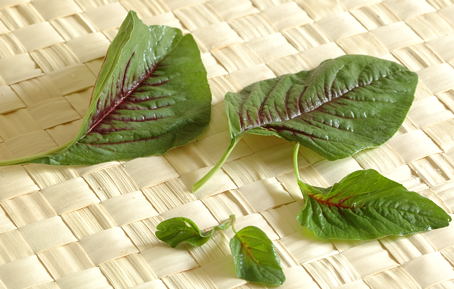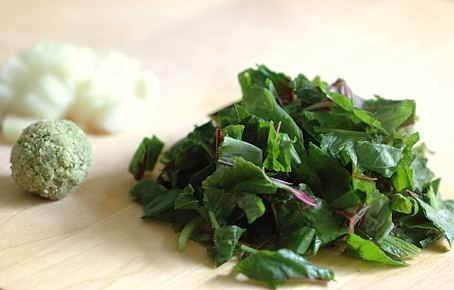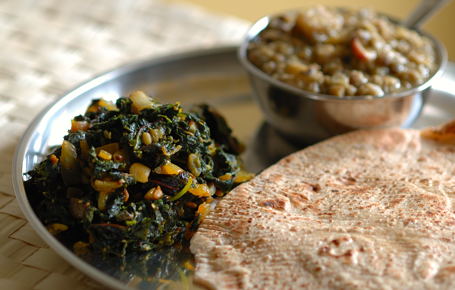
Fresh Amaranth (Thotakura) Leaves, In Different Stages of Development ~ for JFI-WBB: Greens
“The People of The World Shall Eat Amaranth” says a Richard Thomas and I agree.
Amaranth, like the temple Amarnath, has a devoted following. From India to Inca, amaranth is loved and praised for its nutritional benefits. If there is a vegetable valedictorian in green leafy vegetable world, then amaranth must be it. In our hometown, Nandyala in India, bunches of fresh amaranth leaves are a common sight at ritu bazaars (farmer markets) and sold under the name of Thotakura or Koyagura. Translation “garden leaf”. Just one seed is enough, amaranth spreads and makes the garden look vibrant with its beautiful red tinged-green leaves, so the name. Here, they are sold as Amaranth/Red Spinach/Chinese Spinach and available in most of the Indian and Southeast Asian grocery shops, during spring and early summer.
Amaranth (Thotakura) leaves start out green when they are tiny. As they grow, the red streak begins to appear and becomes prominent, almost covering the entire leaf in mature leaves. The leaves are stronger than regular spinach and on cooking do not ooze much water. The flavor of cooked amaranth leaves is more prominent and way better than that of spinach or other similar greens. Traditionally we prepare curries and also add the leaves to flavor dals. A quick stir fry, together with garlic, onions and green chilli-coconut powder is the popular method of cooking. And the curry is often served as a side dish to rice and dal, or chapati and dal. A cup of yogurt on the side makes this combination a complete meal for us.

Chopped Amaranth Leaves, Green Chilli-Coconut (Grinded and Shaped into a Round) and Onions
Recipe:
1. A bunch of fresh amaranth (thotakura), medium sized onion and garlic clove.
Pluck the leaves and tender stalks. Wash and drain. Finely chop the leaves, stalks and also onion and garlic to small pieces.
2. Four green chillies and a tablespoon of fresh or dried grated coconut.
Grind green chillies, coconut powder and a pinch of salt to fine consistency in a blender/spice grinder or in mortar with a pestle.
3. A teaspoon oil and quarter teaspoon each- urad dal, cumin & mustard seeds.
Heat oil in a wide skillet. Add and toast urad dal, cumin and mustard seeds, in that order.
4. Add garlic and onion. Stir fry to soft.
5. Add finely chopped leaves and stalks. Also, sprinkle green chilli-coconut powder and turmeric. On medium-high, cook until the leaves wilt. Sprinkle salt to taste and mix. Cook another couple of minutes and serve hot.

Amaranth (Thotakura) Curry with Chapati and Plantain Moong Dal
Fresh amaranth:
Nutritional Benefits
In Indian languages – Thotakura, Koyagura (Telugu), Cheera (Malayalam), Chaulli or Chowlii Chauli, Chavleri Sag (Hindi, Punjabi)
In Other languages – Red spinach, Rau Den, Chinese spinach, Hon-toi-moi, Yin choy, Eeen choy, Hsien tsai
